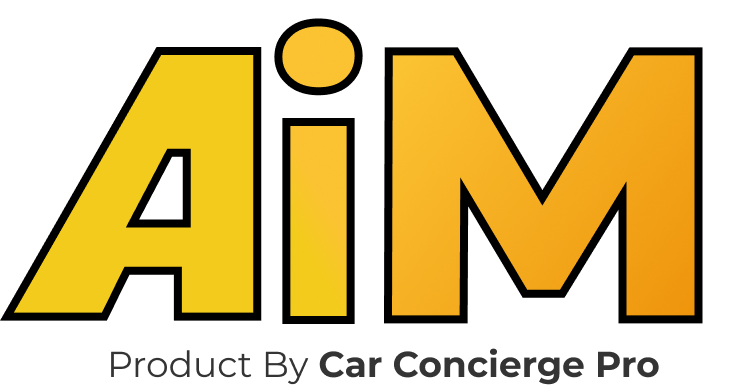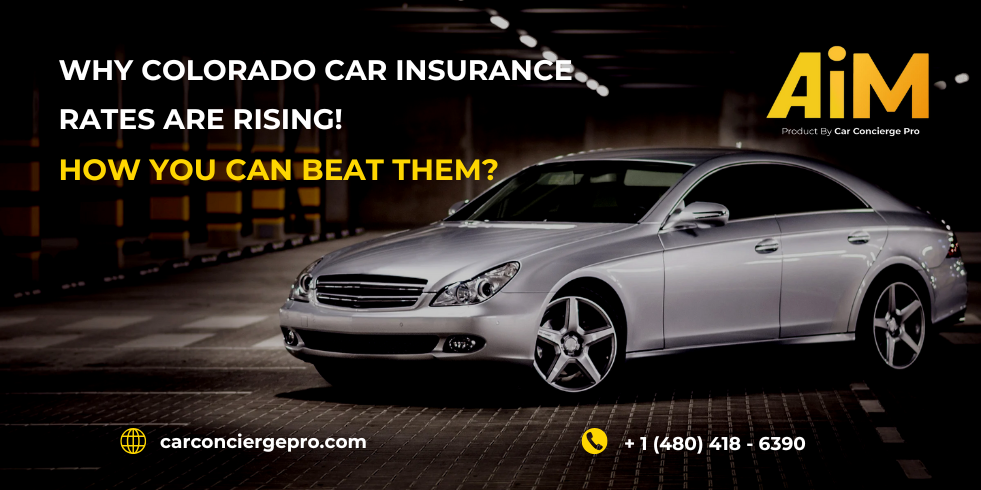Car insurance is a necessity for every driver, but that doesn’t mean you have to overpay for coverage. Finding cheap car insurance that still provides adequate protection is possible—if you know where to look and how to compare policies effectively.
Whether you’re a new driver, have a tight budget, or are simply looking for ways to cut costs, this guide will show you how to find affordable car insurance without sacrificing essential coverage. Plus, we’ll introduce you to Car Concierge Pro and AiM (Auto Insurance Monitoring)—two services designed to help you secure the best possible rates effortlessly.
Table of Contents
Why You Need to Compare Car Insurance Rates
Car insurance premiums are not one-size-fits-all. Insurance companies use unique formulas to assess risk, meaning the price for the same driver can vary significantly between providers. Comparing multiple quotes is a powerful way to save money and ensure you receive the best coverage for your needs.
1. Find the Best Deal: Avoid Overpaying for Coverage
Shopping around ensures you are not paying more than necessary for car insurance. Even if you are satisfied with your current policy, you could be missing out on better rates from other providers.
- A study by ValuePenguin found that car insurance rates can vary by as much as 40% between insurers for the same level of coverage.
- On average, drivers who compare quotes annually can save $500 or more per year.
Compare at least three to five different insurance providers before renewing or purchasing a policy.
2. Customize Your Policy to Fit Your Needs
Not every driver requires the same level of coverage. Comparing quotes allows you to tailor your policy based on your specific circumstances.
Coverage Considerations:
- Basic Liability Coverage: Meets state minimums but may leave gaps in protection.
- Comprehensive & Collision Coverage: Essential for newer or financed vehicles.
- Roadside Assistance & Rental Reimbursement: Extra protection that may be necessary for frequent travelers.
Example: A driver in Florida with a 10-year-old vehicle may only need liability insurance, while a driver in California financing a new car would benefit from full coverage.
3. Unlock Discounts and Savings Opportunities
Different insurance companies offer different discounts, and by comparing quotes, you can maximize savings.
Common Discounts to Look For:
- Good Driver Discount: Up to 30% savings for accident-free drivers.
- Multi-Policy Discount: Save 10-25% by bundling home and auto insurance.
- Low Mileage Discount: Ideal for drivers who commute less than 7,500 miles per year.
- Student Discount: Young drivers with good grades can save up to 15%.
Case Study: A driver in Texas saved 18% by switching to an insurer that offered a low-mileage discount, which their previous provider did not offer.
4. Stay Competitive: Keep Up with Rate Fluctuations
Car insurance premiums fluctuate based on various factors, including economic conditions, accident trends, and even your personal driving history. Regularly comparing quotes helps ensure you always have a competitive rate.
Example:
- Car insurance rates in 2023 increased by 8% nationwide due to rising vehicle repair costs.
- Some companies raised rates by 10-12%, while others remained steady or even lowered premiums to attract new customers.
Even if your premium hasn’t increased, check quotes every 6 to 12 months to make sure you’re still getting the best deal.
5. Avoid Automatic Renewal Traps
Many policyholders allow their insurance to renew automatically, assuming they are still getting the best rate. However, loyalty doesn’t always pay in the insurance industry.
- A Consumer Reports study found that long-term policyholders may pay up to 20% more than new customers due to gradual premium increases.
Always compare rates before renewing to ensure you’re not overpaying.
6. Adjust Coverage as Your Needs Change
Life changes such as moving to a new city, purchasing a new vehicle, or even improving your credit score can impact your insurance rates. Regularly comparing quotes helps you find the most suitable coverage for your current situation.
Scenarios That May Require a Coverage Adjustment:
- Relocating: Moving from an urban area to a suburban or rural location can lower rates.
- Improved Credit Score: Many insurers offer lower premiums to drivers with better credit scores.
- Paid-Off Vehicle: If you’ve finished paying off your car, you may no longer need full coverage.
Example: A driver in New Jersey moved to Pennsylvania and saw their premium drop by $350 per year due to different state insurance laws.
7. Consider Telematics and Usage-Based Insurance (UBI) Programs
Many insurance providers now offer telematics-based programs that track driving habits and reward safe behavior with lower premiums.
Popular Telematics Programs:
- Progressive’s Snapshot: Discounts of up to 30% for safe driving.
- State Farm’s Drive Safe & Save: Offers reductions based on mileage and driving habits.
- Allstate’s Drivewise: Provides cashback rewards for cautious drivers.
- A J.D. Power study found that drivers using telematics programs saved an average of 15-25% on their premiums.
If you drive fewer than 10,000 miles per year, consider a telematics-based insurance policy to maximize savings.
8. Leverage Competitive Quotes to Negotiate a Better Rate
If you find a lower quote elsewhere, you can use it to negotiate a discount with your current insurer.
Example: A driver in California obtained a lower quote from a competitor and used it to negotiate a $200 annual discount with their current provider.
Always ask your current insurer if they are willing to match or beat a competitor’s rate before switching.
9. Check Insurer Ratings for Customer Service and Claims Handling
Not all insurance companies are equal when it comes to handling claims and customer service. Comparing quotes also means researching provider reputations.
Top-Rated Insurance Companies for 2024:
- Best Overall: State Farm (high customer satisfaction, strong financial backing)
- Best for Discounts: GEICO (multiple discount opportunities)
- Best for Customer Service: USAA (highest-rated for military families)
Check insurer ratings from J.D. Power, AM Best, and the Better Business Bureau before making a switch.
10. Understand the Fine Print Before Switching
Lower premiums are appealing, but ensure you’re not sacrificing essential coverage. Always review:
- Deductibles: Higher deductibles lower premiums but increase out-of-pocket costs in case of a claim.
- Coverage Limits: Ensure you meet or exceed your state’s legal requirements.
- Exclusions: Some policies may exclude certain drivers or vehicle uses.
Always read the fine print before switching insurers to avoid unexpected coverage gaps.
Comparing car insurance rates is a smart financial move that can lead to substantial savings and better coverage. By taking the time to shop around, leverage discounts, and reassess your policy, you ensure you’re always getting the best deal.
Compare at least three to five quotes before purchasing or renewing a policy. Look for new discounts at each renewal period. Use telematics or UBI programs for additional savings. Negotiate with your current insurer if you find a lower rate elsewhere.
How to Find Cheap Car Insurance in Minutes
While searching for the cheapest rates can seem overwhelming, following these steps will streamline the process and help you save money.
1. Determine Your Coverage Needs
Before you start comparing quotes, decide what type of insurance you need. The most common coverage options include:
- Liability Insurance: Covers damages you cause to other vehicles or property.
- Collision Insurance: Pays for damages to your car after an accident.
- Comprehensive Insurance: Covers non-collision incidents like theft, vandalism, and weather damage.
- Uninsured/Underinsured Motorist Coverage: Protects you if you’re in an accident with a driver who doesn’t have enough insurance.
Choosing the right balance between coverage and affordability is key to securing cheap car insurance without unnecessary risks.
2. Compare Quotes from Multiple Providers
Shopping around is the best way to find affordable auto insurance. Insurance providers have different pricing models, and even a small difference in how they assess risk can mean hundreds of dollars in savings.
3. Take Advantage of Discounts
Many insurance companies offer discounts that can significantly lower your premium. Here are some common ones to look for:
- Safe Driver Discounts – If you have a clean driving record, you could save up to 30%.
- Bundling Discounts – Combine auto insurance with home, renters, or other policies to receive lower rates.
- Good Student Discounts – Young drivers with a 3.0 GPA or higher often qualify for savings.
- Low Mileage Discounts – If you don’t drive often, some providers offer lower rates.
- Defensive Driving Course Discounts – Completing an approved safety course can reduce your premium.
What Affects Your Car Insurance Rates?
Car insurance premiums are influenced by several key factors, many of which you can control. Understanding how these variables impact your insurance costs can help you make informed decisions to lower your rates. Below is a detailed breakdown of the primary factors affecting car insurance premiums:
1. Driving Record
Your driving history is one of the most significant factors insurers use to determine your premium.
How It Affects Your Rate:
- Accidents, speeding tickets, and other traffic violations can increase your premiums by 20% to 50%.
- A clean driving record can qualify you for a safe driver discount of up to 30%.
- Some insurers offer accident forgiveness programs, preventing your first accident from raising rates.
- A driver with a DUI conviction can see rates increase by up to 80%.
- Minor violations, such as running a red light, may increase rates by 10-15%.
Enroll in defensive driving courses to lower your premium and maintain a clean driving record.
2. Vehicle Type
The car you drive significantly affects your insurance costs.
How It Affects Your Rate:
- Luxury and sports cars often have higher insurance rates due to costly repairs and higher theft rates.
- Vehicles with high safety ratings and anti-theft devices can qualify for discounts.
- Electric vehicles sometimes have higher premiums due to expensive battery replacements.
Example:
- A Honda Accord costs significantly less to insure than a BMW 5 Series due to repair costs and safety features.
When purchasing a new car, research insurance costs beforehand to ensure it fits your budget.
3. Credit Score
Many insurers use credit history to determine rates, as studies suggest a correlation between credit score and risk level.
How It Affects Your Rate:
- A higher credit score can result in lower premiums, while poor credit can increase rates by up to 50%.
- States like California, Hawaii, and Massachusetts prohibit using credit scores in insurance pricing.
- A driver with a credit score above 750 can save an average of $200 per year on car insurance.
Improve your credit score by making timely payments and reducing debt to qualify for better insurance rates.
4. Location
Where you live plays a crucial role in determining your insurance rates.
How It Affects Your Rate:
- Urban areas tend to have higher rates due to increased traffic, higher accident rates, and vehicle theft.
- Rural drivers often pay lower premiums due to fewer accidents and lower crime rates.
- States with frequent natural disasters, like Florida and Louisiana, have higher comprehensive coverage costs.
Example:
- Drivers in New York City pay 25% more than drivers in rural New York due to congestion and theft rates.
If relocating, compare insurance rates in different areas before making a move.
5. Age and Experience
Young and inexperienced drivers typically pay more than older, experienced drivers.
How It Affects Your Rate:
- Drivers under 25 can pay twice as much as those in their 30s or 40s.
- Adding a teen to a family policy can be more cost-effective than purchasing a separate policy.
- The average annual premium for a 16-year-old driver is around $3,500-$5,000, whereas for a 35-year-old, it’s about $1,200-$1,800.
Encourage young drivers to take defensive driving courses and maintain good grades to qualify for discounts.
6. Coverage Level
The type and amount of coverage you choose also impact your insurance costs.
How It Affects Your Rate:
- Basic liability insurance is cheaper but provides limited protection.
- Comprehensive and collision coverage increases premiums but offers greater financial security.
- Higher deductibles lower premiums but require more out-of-pocket expenses in case of a claim.
Assess your financial situation and risk tolerance before choosing your coverage level.
7. Annual Mileage
The number of miles you drive annually can affect your insurance rates.
How It Affects Your Rate:
- Drivers who commute long distances tend to have higher premiums.
- Low-mileage drivers (below 7,500 miles per year) may qualify for discounts.
Example:
- A driver who works remotely and drives fewer than 5,000 miles annually could save up to 15% on premiums.
If you drive less, ask your insurer about mileage-based discounts.
8. Gender and Marital Status
Certain demographics can influence your insurance rates.
How It Affects Your Rate:
- Young male drivers typically pay more than young female drivers due to higher accident rates.
- Married drivers often receive lower rates compared to single drivers.
- Studies show that married drivers are 5% less likely to file claims than single drivers, leading to lower premiums.
If you get married, inform your insurer as you may qualify for a discount.
9. Discounts and Special Programs
Many insurers offer discounts that can significantly lower your premium.
Common Discounts to Look For:
- Good Driver Discount: Up to 30% savings for accident-free drivers.
- Multi-Policy Discount: Save 10-25% by bundling home and auto insurance.
- Low Mileage Discount: Ideal for drivers who commute less than 7,500 miles per year.
- Student Discount: Young drivers with good grades can save up to 15%.
Regularly check with your insurer to see if you qualify for new discounts.
By understanding what affects your car insurance rates, you can take steps to lower your premiums. Here are some actionable tips:
Maintain a clean driving record to qualify for safe driver discounts. Improve your credit score to secure better rates. Consider buying a vehicle with high safety ratings to reduce insurance costs. Compare quotes from multiple insurers at least once a year. Enroll in telematics programs if you are a safe driver and want additional savings.
How to Save Even More on Car Insurance
In addition to comparing quotes and finding discounts, here are proven strategies to lower your insurance costs:
1. Choose a Higher Deductible
Opting for a higher deductible can significantly reduce your monthly premium. Just make sure you can afford to pay that amount out-of-pocket if needed.
2. Drive a Safe, Affordable Car
Insurance providers charge lower rates for vehicles with high safety ratings and lower repair costs.
3. Maintain a Good Credit Score
A high credit score can lead to lower insurance premiums. Pay bills on time and avoid maxing out credit cards to maintain a strong financial profile.
4. Reduce Unnecessary Coverage
If you have an older car that’s worth less than $3,000, you might not need comprehensive or collision coverage.
5. Enroll in Usage-Based Insurance Programs
Some insurers offer discounts if you allow them to track your driving habits using a mobile app or device. Safe drivers can see significant savings.
Conclusion
Finding cheap car insurance doesn’t mean settling for poor coverage. By comparing quotes, leveraging discounts, and using services like Car Concierge Pro and AiM, you can enjoy affordable and reliable car insurance without the stress.



